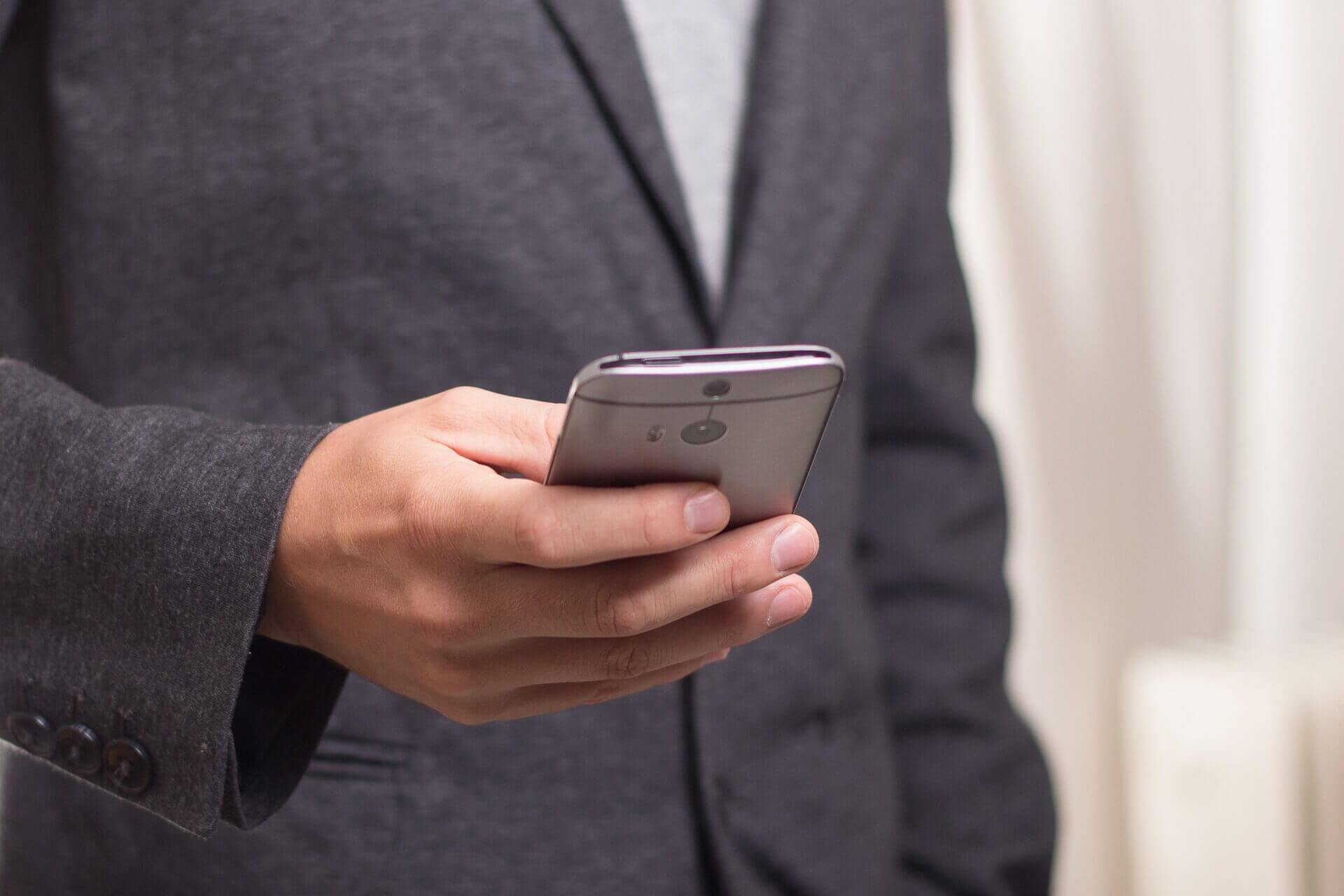An outgoing call is one you start from your device to get in touch with someone else. It works the opposite way of an incoming call, where someone else reaches out to you first. Getting this basic difference right helps with everyday communication. For personal use, it lets you keep track of how much you use your phone and make sense of your bill. In business, outgoing calls matter for staying competitive. They’re how sales teams, customer service staff, and market researchers connect with people. This guide walks through all there is to know about them—starting with the basics, then moving to advanced tips that can turn a simple call into real business wins.
This guide will give you step-by-step explanation of the outgoing call meaning. First of all, we've got a basic definition for you. After that, we will provide a comparison with inbound calls. In addition to that, we will take a look at the determining factors for the cost of outgoing calls and learn the importance of that in business communication.
What Does Outgoing Call Mean?
Definition and Basics
An outgoing call is a call you or your device start to connect with another person or service. Think of it this way: if you pick up the phone and dial, that’s outgoing. It’s the opposite of an incoming call, which someone else sends to you. This works across all types of phones—landlines, mobiles, and even internet-based services like Skype or Zoom (known as VoIP, short for Voice over Internet Protocol). For an outgoing call to work, your device needs a network connection to send the call signal to the person you’re trying to reach. Service providers keep track of these calls for billing, with costs depending on factors like how long the call lasts, where you’re calling, or your plan’s terms.
Examples of Outgoing Calls
Everyday cases include dialing a friend’s cell number, a business calling a client on a landline, or using a VoIP app to reach a coworker abroad. Emergency calls to numbers like 911 (in the U.S.) or 112 (globally) are also outgoing because you’re the one starting the call for help. Even automated calls—like appointment reminders from a doctor’s office or delivery alerts—count as outgoing. These are triggered by systems to contact recipients.
Understanding Cancelled Calls
You might see "Cancelled Call" in your call history too. This is a specific type of outgoing call. It can be confusing.
Definition of Cancelled Calls
A cancelled call is an outgoing call that you ended before it fully connected. You hung up during the dialing phase. This happens before the recipient's phone starts ringing. It also happens before the call reaches a voicemail system.
Common Causes
There are some common situations that can lead to a cancelled call being in your records:
· Realizing you dialed the wrong number and hanging up immediately.
· Changing your mind about making the call right after you press the dial button.
· Accidental "pocket dials" that you end before they connect.
· A poor network signal that prevents your phone from successfully starting the call.
Types of Outgoing Calls
Outgoing calls are categorized by destination, cost structure, and purpose. This is especially true in business contexts.
Types of Outgoing Calls for Personal and General Use
For most individuals, outgoing calls fall into four main categories:
· Local Calls go to numbers within your specific geographic area. Most modern phone plans include unlimited local calls.
· Long-Distance Calls reach numbers outside your local calling area but still within the same country.
· International Calls go to a different country. They require using a specific country code before the main phone number.
· Toll-Free Calls connect to special numbers like 800, 888, or 877 in the US. The business that owns the number pays for the call. This makes it free for you.
Types of Outgoing Calls for Businesses
In commercial situations, the discussion about outbound calls becomes strategic. They might frequently get classified according to the way they're made:
· Manual Outgoing Calls refer to the calls made when an employee lives to call the number and talk with the user. Sales or support agents frequently do it.
· Automated Outgoing Calls are actually robocalls. They work by calling a list of numbers via an automatic-dialing system. Such calls might have a pre-recorded message or they might let a live agent answer after someone picks up the phone. Their usage is very strictly regulated by laws like the Telephone Consumer Protection Act (TCPA) in the US.
· International Outbound Calls are the business calls made to suppliers, clients, and partners in other countries. Companies usually oversee these international calls using special VoIP services and run them on a low budget.
How does Outgoing Calls Work
Making a call at first feels instant. However, several key steps happen behind the scenes to connect you:
Dial the Number
It starts when you enter the digits on your keypad. Or you select a contact from your address book and press the call button.
Set Up the Connection
Your phone sends a digital request to the nearest cell tower. For VoIP, it goes through your internet router. The network accepts this request, finds the recipient's number, and builds a route for the call.
Wait for the Recipient to Answer
You hear a ringing tone. This isn't just a placeholder sound. It's an audible signal from the network confirming that the recipient's phone is being alerted to your call.
Begin the Conversation
When the person you're calling answers, the network opens a two-way audio channel, and the connection is now live. Your conversation can begin.
End the Call When Done
You or the call receiver can use the "end" button to terminate the call. This action signals the network to terminate the connection and free the resources.
Outgoing Call vs Incoming Call
Understanding the difference between an outgoing and an incoming call is fundamental. It explains your call log and phone bill better. The basic differences are in who initiates the call, costs, and context.
A table is the clearest way to distinguish them:
Feature | Outgoing Call | Incoming Call |
Initiator | You start the call. | Someone else starts the call to you. |
Cost | You (the caller) typically pay, based on your plan. | Generally free for you to receive (exceptions for roaming or collect calls). |
Phone Display | Your screen shows "Calling [Name]" or the number being dialed. | Your screen shows "Incoming Call" or "[Name] is calling." |
Business Context | Proactive outreach: Sales, marketing, appointment reminders. | Reactive response: Customer support inquiries, inbound sales leads. |
What Determines Call Costs?
The cost of an outgoing call is not a fixed value. It is determined by a complex combination of factors: the type of call, your specific plan, and the network you use are all crucial.
Costs by Call Type
First, where your call goes is the primary factor affecting its cost:
Local Calls
Usually, these are the most economical. They are included in most postpaid plans as complimentary services, offering unlimited usage.
Long-Distance Calls
Historically, these were costly, but in most US and Canada plans today, they are effectively the same as local calls with no extra cost.
International Calls
These are regarded as the most costly. They tend to be billed per minute, with rates varying by country. Industry reports suggest rates can range from a few cents to over a dollar per minute.
Toll-Free Calls
These are free for the caller. Instead, the business you are calling is charged as a customer service expense.
VoIP Calls
Calls made over the internet (Voice over Internet Protocol) are often significantly cheaper. Calls between users of the same app (like WhatsApp to WhatsApp) are typically free, using your data or Wi-Fi instead of cellular minutes.
Costs by Call Plan
Your mobile or landline plan dictates the specific rates you pay for the call types above:
· Prepaid Plan Pricing: With a prepaid plan, you pay for service upfront. Each outgoing call deducts credit from your balance based on a per-minute or per-call rate.
· Postpaid Plan Pricing: With a postpaid plan, you pay a monthly fee for a set bundle of services. These plans often include unlimited nationwide calls but charge extra for international calls or calls to premium-rate numbers.
Costs by Carrier and Network
Lastly, your network provider plays a crucial role in determining costs.
Why Do Outgoing Calls Matter
Beyond the simple definition, outgoing calls reflect your assertiveness. They enable proactive communication, both in personal life and at work.
For individuals, outgoing calls are the engine of proactive interaction: You call the doctor to schedule an appointment, check on relatives, order food, or inquire about jobs. Each call simplifies your life.
For companies, outgoing calls are tools for growth and relationship-building. They are not mere tasks but strategic actions:
· Relating well with clients: Following up with clients shows you care beyond closing a sale.
· Selling more and prospecting: A large percentage of sales representatives build success through proactive customer outreach.
· Informing customers fully: For example, alerting a customer to a shipping delay before they discover it builds trust.
· Conducting research and gathering feedback: Direct calls yield frank, honest details that surveys often miss.
Managing Outgoing Calls on Smartphones
Managing Outgoing Calls on iPhone
Making an outgoing call on an iPhone is simple: Tap a number in the Phone app, select someone from Contacts, or use Siri with commands like “Call Mom.”
To check your call history: Open the Phone app and tap “Recents” at the bottom. Outgoing calls are marked with a small phone icon with an arrow pointing away.
Blocking specific outgoing numbers directly through iOS is not possible (this is a carrier service). The best solution is to restrict dialing via the Screen Time feature:
1. Go to Settings > Screen Time.
2. Tap "Communication Limits."
3. Under "Allowed Communication," set limits for "During Screen Time" and "During Downtime." You can restrict calls to Contacts Only.
Managing Outgoing Calls on Android
To make an outgoing call: Use the Phone app, tap someone in Contacts, or tell Google Assistant, "Hey Google, call the office."
To find your call log: Go to the "Recents" or "History" tab of your Phone app. Look for the arrow next to contact names—an outward arrow indicates an outgoing call.
Android has strong built-in features for blocking incoming numbers. For blocking outgoing calls, options depend on your phone maker. Some offer parental controls; for specific outgoing blocks, you may need a third-party app or to contact your carrier.
Managing Outgoing Calls on WhatsApp
WhatsApp is widely used as a calling tool, using an internet connection instead of phone minutes.
To call someone on WhatsApp: Open a chat and press the phone or video icon. The Calls tab also stores your call history for the past week, which you can use to make new calls.
The "Calls" tab keeps a record of all your calls, with each entry showing the contact’s name and an icon indicating whether it was outgoing/incoming or voice/video.
Privacy is addressed by design: If you block a contact on WhatsApp, they can’t call you, and you can’t call them.
Best Practices for Making Outbound Calls as a Business
Making calls that make potential clients feel in control is a science. It requires forethought, empathy, and tact:
1. Know Your Aim and Stick to It: Never make a call without a clear goal (e.g., scheduling a meeting, gathering insights, or making a sale). This clarity guides the entire conversation.
2. Research Before You Call: Avoid "cold" calls. A quick LinkedIn search or review of the company website reveals key details. Mentioning the company’s recent news or mutual contacts shows you’ve done your homework.
3. Create a Good Intro: The first ten seconds determine if you get more time. Clearly state your name, company, and reason for calling, emphasizing the benefits to them.
4. Listen More Than You Talk: Top salespeople excel at listening. Use open-ended questions to encourage conversation. Follow the 80/20 rule: listen 80% of the time, talk 20%.
5. Perfect Your Tone and Pace: Your voice is your most powerful tool. Speak clearly at a normal pace. Confidence and empathy build trust more effectively than a fast, monotone delivery.
6. Manage Objections Gracefully: Objections are requests for more information, not rejections. Acknowledge concerns ("That’s a valid point...") and respond thoughtfully to underlying issues.
7. Always Set Clear Next Steps: No call should end ambiguously. Agree on follow-up actions (e.g., "I’ll send a follow-up email by 3 PM today" or "Our next call is Tuesday at 10 AM") to ensure both parties know what to expect.
Legal and Ethical Considerations
During outbound business calls, strict adherence to legal and ethical guidelines is critical. Non-compliance can result in significant fines and brand damage.
Disclaimer: This information is for educational purposes only and is not a substitute for professional legal advice. Contact a legal professional for specific guidance regarding your business.
Key regulations govern telemarketing and business calls:
· In the U.S., the Telephone Consumer Protection Act (TCPA) restricts the use of auto-dialers and pre-recorded messages, particularly for mobile phones. It also established the National Do Not Call Registry, which businesses must comply with.
· In the European Union, the General Data Protection Regulation (GDPR) governs personal data handling, including requiring clear consent before making marketing calls and respecting requests to be forgotten (by deleting their data).
Beyond legal obligations, ethical conduct drives long-term success:
· Transparency: Always state your name, company, and purpose clearly. Dishonesty erodes trust instantly.
· Respect for Time: Keep calls brief and relevant. Acknowledge that the recipient’s time is valuable.
· Respect for "No": If someone requests not to be called again, honor their wish immediately and add them to your internal do-not-call list.
Conclusion
The meaning of an outgoing call starts simply: a call you initiate. But it evolves into something powerful.
For individuals, it is a tool for proactive communication. For businesses, it is an engine for growth—a strategic tool for building relationships, driving sales, and providing customer service.
We’ve explored how to manage these calls on various devices, advanced technologies powering professional outbound campaigns, and best practices for success.
Whether personal or business, the most effective outgoing calls have a clear purpose, are genuine, and deliver value to the recipient.
FAQ
What does "outgoing call" mean?
An outgoing call is a call you initiate to someone else. It’s when you dial a number and attempt to connect with another person or device, unlike an incoming call (when someone calls you).
Does outgoing call mean you hung up?
No. An outgoing call simply refers to a call you started. Whether you hung up, the other person answered, or it went to voicemail, it’s still classified as outgoing. Hanging up is just one possible outcome.
What does it mean when you call someone outgoing?
This phrasing is unusual. “Outgoing” describes the call, not the person. If someone says this, they likely mean you made a call to another person (an outgoing call to them).
Does outgoing call mean they declined?
No. An outgoing call is your attempt to reach someone. They might decline, answer, or not pick up—but the term itself only indicates you initiated the call, not their response.









